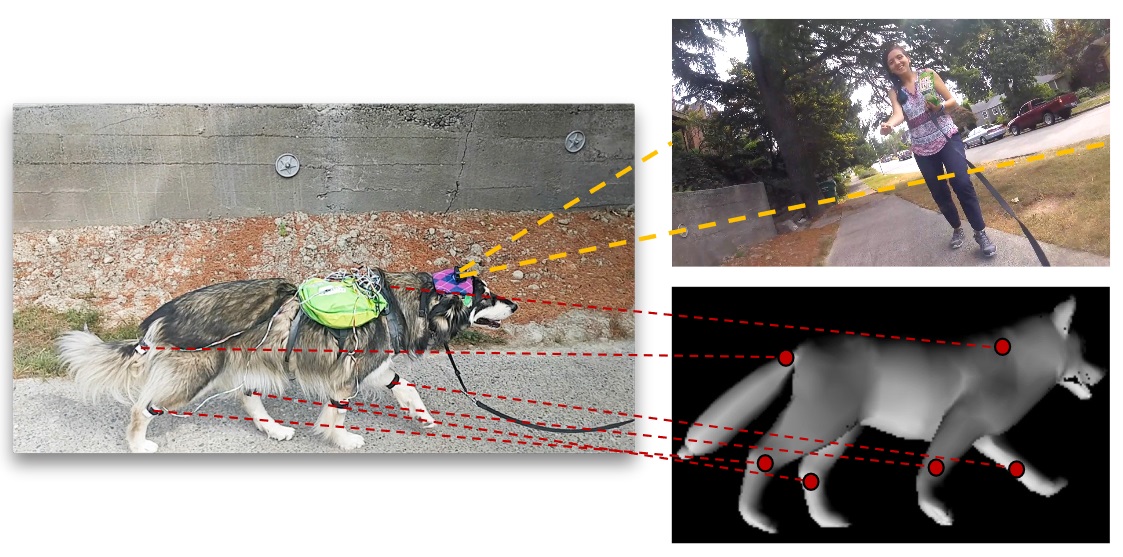In a world transforming rapidly with artificial intelligence, it’s fascinating to see how these technologies can emulate complex behaviors observed in our furry companions. A groundbreaking collaboration between the University of Washington and the Allen Institute for AI has birthed an innovative project that attempts to teach machines to mimic dog behavior using machine learning. This endeavor, while still in its infancy, could redefine our understanding of visual intelligence in both humans and animals.
The Inspiration Behind the Project
Why dogs, you might ask? Dogs are known for their remarkable intelligence and adaptability, yet their thoughts and motivations often remain enigmatic. Their ability to navigate their environment and engage in various tasks presents a challenging yet compelling puzzle for AI researchers. The project aims to bridge the gap in AI’s understanding, not just as passive observers of the world but as active participants capable of simulating intelligent behavior.
From Observation to Data
The core of this project lies in the dataset meticulously collected and named DECADE (Dataset of Ego-Centric Actions in a Dog Environment). The research team observed Kelp M. Redmon, an adorable Malamute, outfitted with a suite of sensors including a GoPro camera and inertial measurement units. This setup allowed them to gather extensive behavioral data while the dog explored a variety of environments — from bustling parks to cozy home settings.
- Visual Input: The GoPro provided a first-hand view of the world through Kelp’s eyes.
- Movement Tracking: The inertial units tracked the positions and movements of his legs, tail, and trunk.
- Sound Perception: A microphone captured auditory cues which are vital in understanding a dog’s interaction with its environment.
This robust sensory framework allowed researchers to create a comprehensive dataset that was pivotal for training the AI system to predict the actions of the dog based on what it observed.
What the AI Learned
The real magic began when the AI was introduced to this rich tapestry of sensory input. It learned to predict a dog’s reaction in various scenarios — would it chase a squirrel on sight, or approach its owner when called?
According to Hessam Bagherinezhad, one of the lead researchers, the AI developed competency in several key areas:
- Joint Movement: It learned how to coordinate its joints to walk seamlessly.
- Obstacle Avoidance: The AI figured out how to navigate around obstacles, whether they were trees or furniture.
- Social Interaction: Understanding the dynamics of play, like chasing after a flying toy, became part of its learning curve.
Paving the Way for Future Research
While this initial experiment showcased promising results, researchers recognize there’s more territory to cover. The inclusion of other sensory cues — particularly smell — could offer new dimensions of understanding. Furthermore, the potential for generalizing the learned behaviors from one dog to another could open new avenues in AI applications, especially in robotics and animal interaction systems.
Conclusion
This pioneering work on canine behavior is just the tip of the iceberg in the landscape of AI research. It not only contributes to our comprehension of artificial intelligence but also sheds light on the intricate world of dog cognition. As we strive for machines to comprehend and navigate the complexities of their environments like dogs do, we inevitably inch closer to bridging the gap between human technology and intelligent life forms. This research promises to shape future explorations in visual intelligence while enhancing our bond with our four-legged friends.
At fxis.ai, we believe that such advancements are crucial for the future of AI, as they enable more comprehensive and effective solutions. Our team is continually exploring new methodologies to push the envelope in artificial intelligence, ensuring that our clients benefit from the latest technological innovations. For more insights, updates, or to collaborate on AI development projects, stay connected with fxis.ai.

